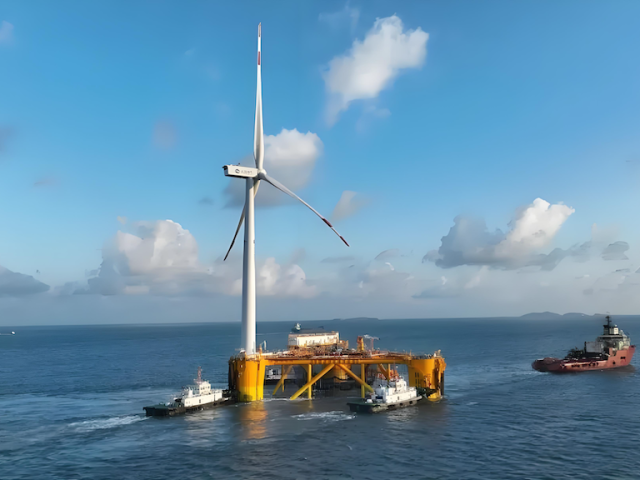Fuwa will use Bauma China to launch the first models of a new crawler crane ranging from 55 to 285 tonnes capacity, which it plans to market worldwide.
According to Dutch-born Hemmo Luijerink, who Fuwa put in charge of the project, the seven-model FWX range will feature a modular design principle, which will help deliver advantages in quality, design speed, manufacturing efficiency, cost control and after-sales service.
All of the new models other than the largest one are due to go on show at Bauma China. The models on the show will comprise, the
- FWX55, a standard lift crane with a 210 tonne-meter load moment rating and a maximum main boom and fly jib combination is 40 + 18 m. The 75-tonne capacity
- FWX75 shares components with the FWX55, but offers as 46 + 18 m main boom and fly jib combination.
- FWX85 meanwhile offers 85 tonnes of capacity, full self-assembly capabilities, and a maximum main boom and fly jib combination of 49 + 18 m.
- FWX135 replaces Fuwa’s QUY150. Capacity is 135 tonnes at 5 m radius and a luffing jib will be available giving a maximum combined length of 48.5 + 49 m.
- FWX185, rated as 180-tonne capacity, will come with the option of a luffing jib, offering a maximum combined length of 58.8 + 52 m.
- FWX225, 225-tonne capacity, which supersedes the QUY250. A luffing jib will be available, giving a maximum combined length of 58.8 + 70 m.
- FWX285 (not on the show), 285-tonne capacity
Also new is the FWT60, a 60-tonne capacity telescopic boom crawler crane to replace the FWT55. It shares parts and architecture with the FWX series. The FWT60 is an upmarket model compared with Chinese competitors, Luijerink said, “targeted to compete with the models of Liebherr, Sennebogen, Link-Belt, and Tadano-Mantis on quality, design, and performance.”
Modules
All models in the new series follow a modular design principle. It is a concept well known in the automotive and computer industries, giving advantages in quality, design speed, manufacturing efficiency, cost control and after-sales service, Luijerink explained. Cost is reduced by needing fewer different parts and components. Benefits include less inventory and cash tied up in stock on the shelf, fewer suppliers to control and with whom to maintain relationships, greater economies of scale, and fewer drawings to maintain. Reliability might also be improved because there is greater opportunity to pre-test component assemblies and quality control is better focused on fewer components.
Engineering of the basic steel structure is done separately from, for example, the hydraulics and electrics. It is done in a way that allows the same basic steel structure to be fitted with either high-grade components, for example, engines, hydraulic pumps, and motors, or with lower cost locally-sourced components for a lower-specification machine. This allows easier adaptation of the specification to what the customer wants.
The structure uses high-grade steel, some of which can now be obtained in China while some other grades still need to be imported, Luijerink said. All machines have the new LifeCab operator cabin. It is designed with the operator’s comfort and safety in mind. Large flat windows are easy to clean, do not distort the view and are easy to replace.
Four models in a pre-production series were completing load and durability testing in late August. This programme was being monitored by experts from Japan. All of the new models other than the largest one are due for the show at the Bauma China exhibition in Shanghai, late November 2012. Depending on the model, sales will start from then. Preparations were being made for serial production at the time of writing in early September.
New factory
Another part of the development at Fuwa is a new factory – 400,000 square meters of the industrial area was acquired in a new technical development zone close to Shenyang airport, high-speed railway and main highways. It will be operational in early 2013 and large crawlers will be built there in addition to the new FWX series. Already in use is the test yard designed for crawler cranes up to 3,600 tonnes.
Other changes at Fuwa include management reform and the development of manufacturing and quality processes. Japanese experts have been hired to help with production technology and quality assurance. Fuwa has chosen to go for quality and innovation and not for high-volume production, Luijerink said.
Fuwa’s roots go back to 1904. For many years it was an excavator manufacturer. Its first hydraulic crawler cranes were launched in the early 1980s. In Jinzhou, Fuwa has a truck crane factory acquired in 2008. It was rebuilt for manufacturing truck cranes from 8 to 90 tonnes capacity. Included is telescopic boom manufacturing technology for building U-shape booms in high-grade steel.
In addition to crawler and truck cranes, Fuwa builds foundation machinery, electric mining shovels, marine cranes and large grab dredgers. According to Fuwa, it is the largest privately owned manufacturer in Asia focused on crawler cranes. Luijerink said it has exported the largest Chinese crawler crane ever, a 750-tonne capacity QUY750 with super lift and windpower package. The Fuwa crawler range goes up to 1,250 tonnes capacity and a 3,000-tonne capacity model is already drawn up.


















